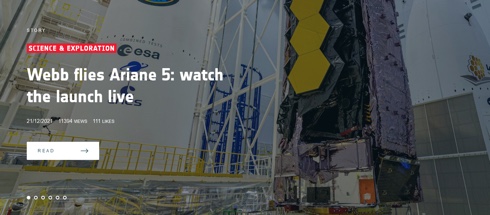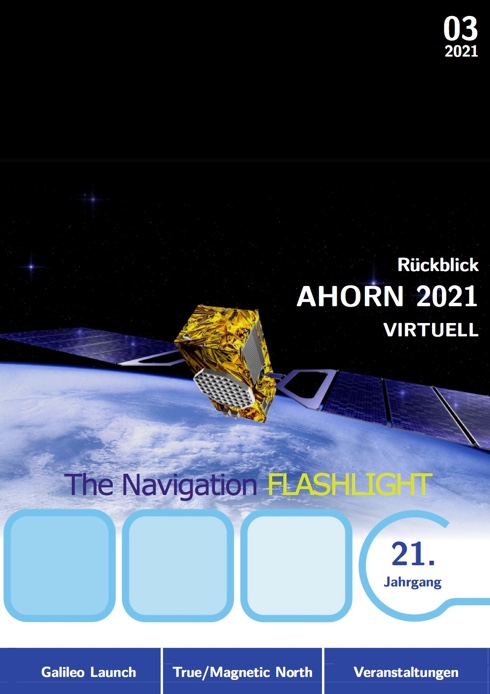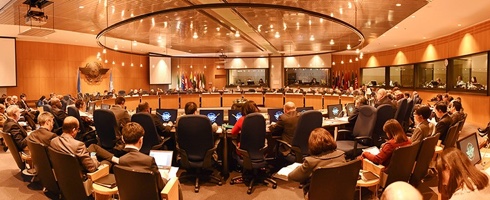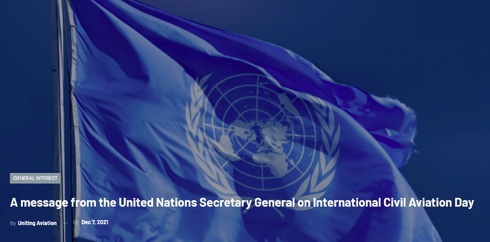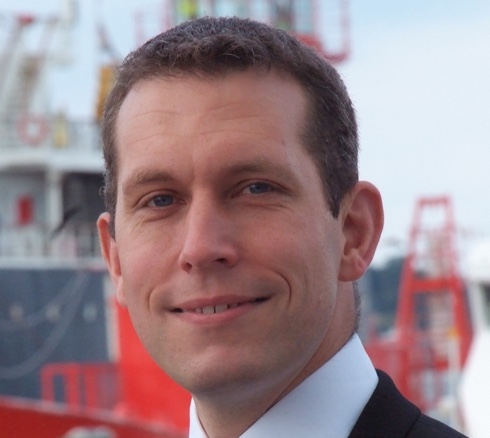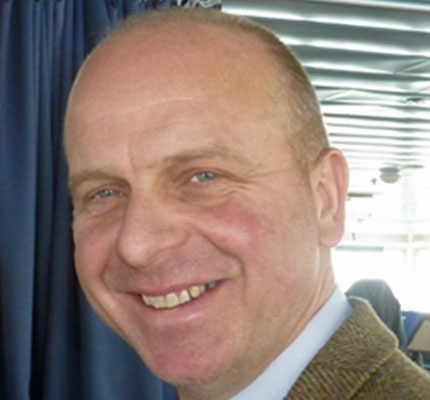Remembering a Far East campaign
An interesting paperback title has been received in recent weeks: The Malayan Emergency and Indonesian Confrontation: The Commonwealth’s Wars 1948-1966, by Robert Jackson, published by Pen & Sword Aviation.
The struggle with Communist terrorists in Malaya known as The Emergency became a textbook example of how to fight a guerrilla war, based on political as much as military means. This book deals with both the campaign fought by British, Commonwealth and other security forces in Malaya against Communist insurgents, between 1948 and 1960, and also the security action in North Borneo during the period of Confrontation with Indonesia from 1962 to 1966. Both campaigns provided invaluable experience in the development of anti-guerrilla tactics, and are relevant to the conduct of similar actions which have been fought against insurgent elements since then.
Precise Ariane 5 launch likely to extend Webb’s expected lifetime

After a successful launch of the NASA/ESA/CSA James Webb Space Telescope on 25 December, and completion of two mid-course correction manoeuvres, the Webb team has analysed its initial trajectory and determined the observatory should have enough propellant to allow support of science operations in orbit for significantly more than a ten-year lifetime (the minimum baseline for the mission is five years). This was reported by the European Space Agency (ESA) on 29 December.
The analysis shows that less propellant than originally planned is needed to correct Webb’s trajectory toward its final orbit around the second Lagrange point known as L2, a point of gravitational balance on the far side of Earth away from the Sun. Consequently, Webb will have much more than the baseline estimate of propellant – though many factors could ultimately affect Webb’s duration of operation.
The accuracy of the launch trajectory had another result: the timing of the solar array deployment. That deployment was executed automatically after separation from the Ariane 5 based on a stored command to deploy either when Webb reached a certain attitude toward the Sun, ideal for capturing sunlight to power the observatory, or automatically at 33 minutes after launch.
Because Webb was already in the correct attitude after separation from the Ariane second stage, the solar array was able to deploy about a minute and a half after separation, approximately 29 minutes after launch.
A New Year message from the president of the IAIN

With restrictions brought about by the Covid pandemic it was with a heavy heart that we had to postpone our World Congress from 2021 and the next one will now be held in the People’s Republic of China in 2024. Nevertheless, we were able to hold a General Assembly in November 2021 at the time of the International Navigation Congress, INC NAV 2021, in Edinburgh, and you can see on our website the Officers’ Committee duly elected thereat.
I am particularly pleased that we at IAIN maintain our liaison with other kindred organizations such as: the International Civil Aviation Organization, the International Maritime Organization, the International Hydrographic Organization, the International Committee on Global Navigation Satellite Systems (ICG), the US Positioning, Navigation and Timing Foundation, the Resilient Navigation and Timing Foundation and the Comité International Radio-Maritime and others. We are able to contribute experts to these forums. This is a valuable capability and at the same time enables us to increase our profile. Long may this continue.
Our contributions to the forums have undoubtedly brought some degree of advancement to the studies of a multitude of topics relative to safety at sea, in the air, in space and on land. This is all to the good of trade, defence and the safety and security of mankind.
During the past year, despite the Covid-19 difficulties we have seen advances in the evolution of the Maritime Autonomous Surface Ship (MASS) and here IMO began a scoping exercise to look into how safe, secure and environmentally sound such craft may be as addressed in IMO documents.
Early in December we noted with glee the report by the European Space Agency (ESA) that Europe’s largest satellite constellation had grown even bigger, following the launch of two more Galileo navigation satellites by Soyuz launcher from Europe’s Spaceport in French Guiana. Galileo satellites 27-28 add to an existing 26-satellite constellation in orbit, providing what is claimed to be the world’s most precise satnav positioning to more than 2.3 billion users around the globe.
These are just two of the many advances in navigation science in which our members have been involved over the past year.
Finally, I pay tribute to the efforts of our Members during these difficult times while Covid-19 remains with us. These loyal, reliable, and hard-working people have continued to provide navigation services so essential for the safety of traffic and thus the maintenance of the global economy at the same time preserving the environment and maintaining peace world wide.
The past year has not been easy for us all. Staff of our Members have remained where possible at their normal workplaces in responding to the exigencies of their services particularly with regard to essential maintenance, outages and the tasks required to keep services operational. Such devotion deserves special mention.
As one year ends and another is about to open I take this opportunity, on behalf of the IAIN Officers and our Secretariat, to wish the world wide navigation community a peaceful and joyous Festive Season and a successful 2022.

Professor Krzysztof Czaplewski,
President IAIN
Christmas Day Webb telescope launch
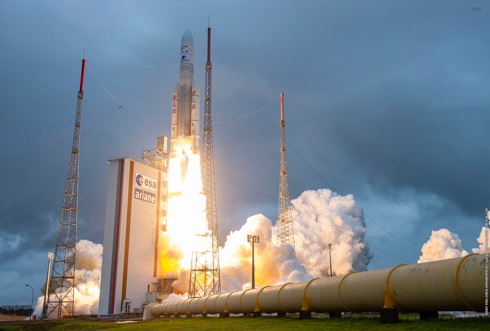
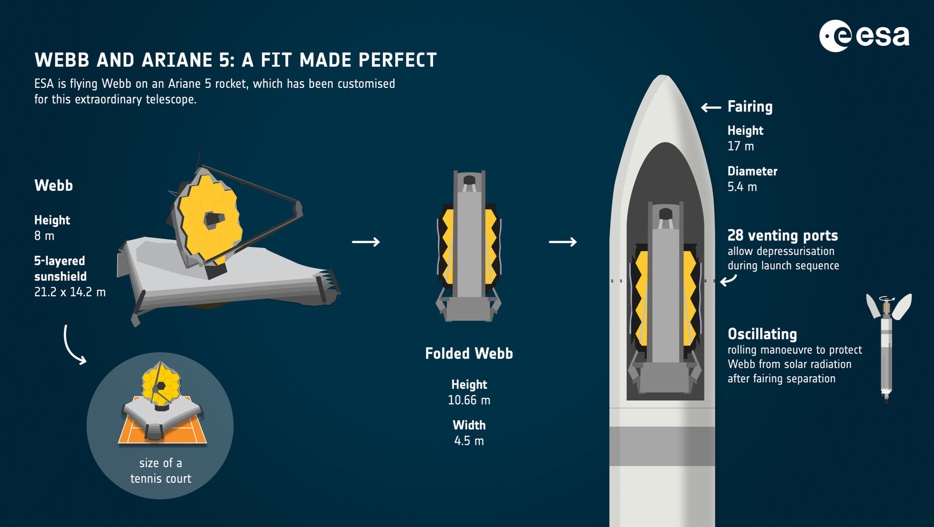
ESA reported on Christmas Day that the James Webb Space Telescope had lifted off on an Ariane 5 rocket from Europe’s Spaceport in French Guiana, at 1320 CET (GMT + 1) its mission to unlock the secrets of the Universe. Following launch and separation from the rocket, Webb’s mission operations centre in Baltimore, USA confirmed Webb deployed its solar array and is in good condition, marking the launch a success.
Incidentally, the telescope’s sunshield measures 21 metres by 14 metres. Stowed inside the rocket for launch, the folded sunshield was packaged in a confined area to accommodate the limited space inside the 5.4-metre diameter rocket fairing which protected Webb during lift-off and on its journey through the atmosphere.
In the coming month, Webb, an international partnership between NASA, ESA and the Canadian Space Agency (CSA), will travel to its destination: the second Lagrange point (L2), where it will study the Universe in infrared.
World’s most sophisticated commercial communications satellite successfully launched

On 23 December Inmarsat, a world leader in global, mobile satellite communications, confirmed the successful launch the previous day of its first Inmarsat-6 satellite, I-6 F1, by Mitsubishi Heavy Industries (MHI) from the JAXA Tanegashima Space Center in Japan.
The Inmarsat-6s (I-6) are Inmarsat’s first ever hybrid L- and Ka-band satellites, incorporating increased capacity and new technological advances for ELERA‘s transformational L-band services alongside additional Global Xpress (GX) high-speed broadband capacity.
Adding to an existing global fleet of 14 geostationary satellites they extend Inmarsat’s commitment to mission critical services while enabling a new generation of pioneering technologies to connect and sustain the world.
This launch is the first of seven planned for Inmarsat by 2024 in the company’s fully-funded technology roadmap.
ESA highlights 2021
As always, ESA has been at the forefront of science, with several science missions en route to their destinations or being prepared for flight, such as BepiColombo, Solar Orbiter, JUICE and ExoMars, and not least rounding off the year with the impending launch of the James Webb Space Telescope.
Europe’s Copernicus programme continues to be the largest Earth observation system in the world, and ESA is even preparing more Earth observation missions.
In 2021, ESA astronaut Thomas Pesquet carried out his Alpha mission to the Space Station, and Matthias Maurer began his Cosmic Kiss mission, continuing into 2022.
Watch the ESA 2021 highlights video.
The navigation Flashlight 2021-3
From our Austrian member institute, the Österreichischer Verein für Navigation, we have received word of the latest issue of their regular publication, The Navigation Flashlight. It is published three times a year, currently in its twenty first year of publication and it is in German.
Israel Navigation Conference and Exhibition – 31 January 2022

The Navigation Workshop is a biennial event organized and sponsored by the Israel Association for Automatic Control (IAAC). For those not familiar with the association, the IAAC is a non-profit organization congregating a large number of members from Academy and Industry interested in the broad areas of Control and System Theory. For further details and the opportunity to subscribe to the IAAC mailing list, please check the IAAC site.
Following the huge success of previous events, the 2022 edition has been scheduled for 31 January at the Daniel Hotel, Herzliya.
The workshop is a one day event dedicated to technical talks that range from fundamental research, to applications, to field test results.
The year at ESA
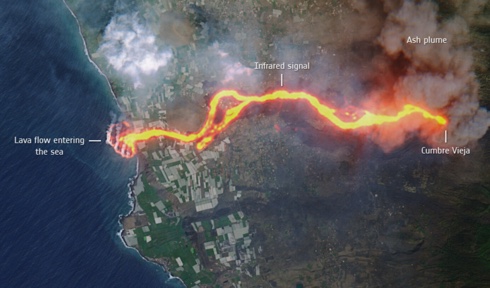
At the European Space Agency (ESA) on 17 December readers were invited to view the Year in Images 2021, the year through the lens with a selection of twenty-four of ESA’s favourite images for the year.
One of them, captured by the Copernicus Sentinel-2 mission on 30 September, shows the flow of lava from the volcano erupting on the Spanish island of La Palma. The cascade of lava can be seen spilling into the Atlantic Ocean, extending the size of the coastline. This ‘lava delta’ covered about 20 hectares when the image was taken.
This Sentinel-2 image has been processed in true colour, using the shortwave infrared channel to highlight the lava flow. The Sentinel-2 mission is based on a constellation of two identical satellites, each carrying an innovative wide swath high-resolution multispectral imager with 13 spectral bands for monitoring changes in Earth’s land and vegetation.
Padhraic Kelleher new President ICAO Air Navigation Commission
It was announced from Montreal on 16 December that the Council of the International Civil Aviation Organization (ICAO) had appointed Mr Padhraic Kelleher to a one-year renewable term as President of the ICAO Air Navigation Commission (ANC), the UN civil aviation organization’s main technical review body.
Mr. Kelleher’s mandate begins on 1 January 2022. As President of the ANC, he will lead the Commission’s work on the development of ICAO’s global plans for safety and for air navigation capacity and efficiency as well as the Standards and Recommended Practices annexed to the Chicago Convention. The management of the ANC’s preparations for ICAO’s 2022 Assembly will also be among his first key responsibilities.
Arctic Convoys 1941-1945 by Richard Woodman
This paperback title was first published in 1994 by John Murray and by Pen & Sword Maritime no fewer than seven times from 2007 to this year, an amazing record for a subject that is still being studied in depth along with the many maritime aspects of both World Wars and where the current publisher keeps this broad topic very much alive.
In the preface, Woodman draws attention to the problems of navigating in the polar seas: ‘A magnetic compass forsakes the familiar, comforting horizontal plane expected of it, and tries to dip down towards the vast mass of iron which forms the earth’s magnetic pole. The normally more precise and less variable gyro compass does the opposite and, in seeking a polar star, tilts upwards. Even the projection of the chart is different from that used elsewhere on the earth’s surface. Atmospheric depressions cause overcast, and mist, fog, and ice brume obscure the horizon, depriving the navigator of the use of his sextant, almanac and chronometer. Often ships ran on dead reckoning, or DR, an amalgam of course, speed and an assumed distance, with estimated values for leeway thrown in for good measure, a mixture of inspiration and guesswork over which no two navigators ever agree. Frequently ships, whether naval or merchantman, simply got lost, particularly those separated from a convoy or proceeding alone’
Coast Guard Cutter Juniper completes AtoN mission across the Hawaiian Islands
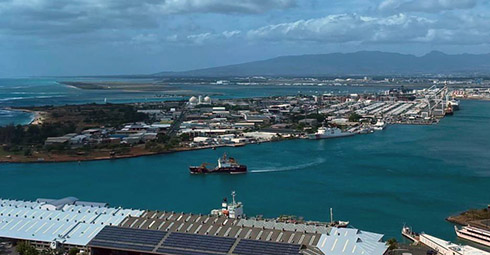
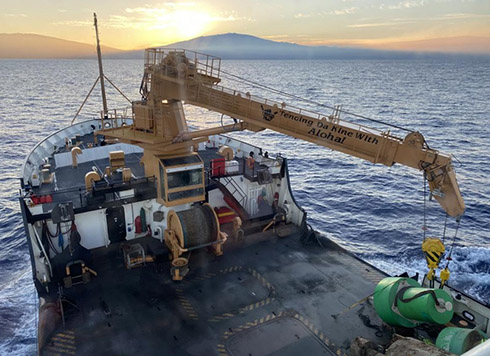
It was reported from Honolulu early in December that the crew of the Coast Guard Cutter Juniper (WLB 201) had concluded a successful week-long aids to navigation maintenance and discrepancy response operation throughout the Hawaiian Islands.
During the 848-nautical mile patrol, the crew of the 225-foot seagoing buoy tender completed 21 buoy evolutions, recovered two sinking buoys, and hauled a beached buoy from the shores of Kahului with assistance from a Coast Guard Station Maui boat crew.
This aids to navigation mission provided the needed infrastructure to ensure a maritime transportation system that promotes economic prosperity and an uninterrupted flow of maritime commerce throughout the Pacific.
ICAO and UNWTO Joint Statement for Aviation Day
For the first time since International Civil Aviation Day was established, in 1994, ICAO commemorated 7 December this year with a special Joint Statement with the UN World Tourism Organization (UNWTO) calling for accelerated global efforts to reconnect the world. This was reported by ICAO from Montreal on the day.
With global connectivity recovery on course, both UN bodies called for intensified efforts towards vaccine equity and stressed that restrictions on travel due to new variants of Covid-19 must only be used ‘as a very last resort,’ noting they are ‘discriminatory, ineffective and against the guidance of the World Health Organization.’
December 7, International Civil Aviation Day – The ITF view
We should be looking ahead, this International Civil Aviation Day, to the challenges of economic recovery and climate change. Instead, we’re still gripped by the devastating impact that Covid-19 continues to have of aviation workers and the industry worldwide. This was the message on the day, 7 December, from the International Transport Workers’ Federation (ITF).
ITF’s message continued to inform that governments in some rich countries have put their own vaccine programmes ahead of tackling the pandemic as a global emergency, and sadly the rise of new, dangerous variants is a setback to the industry’s already fragile recovery.
Workers in aviation are paying the price for this. The knee-jerk reaction to the Omicron variant and tightening of travel restrictions begin a new wave of devastation, hitting an industry already ravaged by the pandemic.
International Civil Aviation Day – A message from the UN Secretary General
A message from the UN Secretary General His Excellency António Guterres: ‘On International Civil Aviation Day, we recognize the many contributions of air travel to our world – from connecting societies and delivering vital goods to supporting millions of livelihoods and contributing billions to the global economy. Covid-19 continues to put deep stresses on international aviation, even as increased vaccination rates and testing protocols make air travel possible again. Countries pledged recently to enhance cooperation and risk management, under the auspices of the International Civil Aviation Organization (ICAO).’
Two new satellites mark further enlargement of Galileo

On 5 December it was reported by the European Space Agency (ESA) that Europe’s largest satellite constellation had grown even bigger, following the launch of two more Galileo navigation satellites by Soyuz launcher from Europe’s Spaceport in French Guiana on that day.
Galileo satellites 27 and 28 add to an existing 26-satellite constellation in orbit, providing what is claimed to be the world’s most precise satnav positioning to more than 2.3 billion users around the globe.
ESA Director of Navigation Paul Verhoef commented: ‘Today’s lift-off marks the eleventh Galileo launch of operational satellites in ten years: a decade of hard work by Europe’s Galileo partners and European industry, over the course of which Galileo was first established as a working system then began Initial Services in 2016. With these satellites we are now increasing the robustness of the constellation so that a higher level of service guarantees can be provided.’
The world’s fastest all-electric vehicle Spirit of Innovation stakes claim
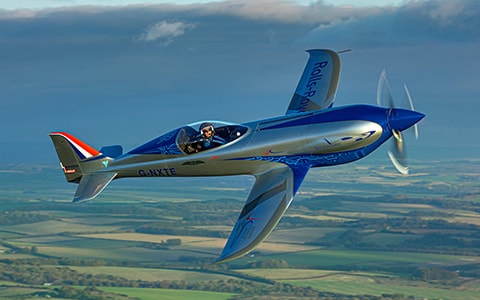
Rolls-Royce has a rich history of air speed record attempts and breaking records, dating back to the Schneider Trophy competitions of the early 1930s.
The speed achieved by test pilot and Rolls-Royce Director of Flight Operations Phill O’Dell in the Spirit of Innovation was more than 213.04 km/h (132 mph) faster than the previous record set by the Siemens eAircraft in 2017. Never in the history of the FAI record attempts has there been such a significant increase in speed over such a short time, highlighting the rapid pace at which electrification of aerospace is advancing.
Towards the end of November Rolls-Royce indicated that the Spirit of Innovation is part of the ACCEL or Accelerating the Electrification of Flight project. Half of the project’s funding is provided by the Aerospace Technology Institute (ATI), in partnership with the Department for Business, Energy & Industrial Strategy and Innovate UK.
Spirit of Innovation, the aircraft, was propelled on its recent record breaking runs by a 400kW (500+hp) electric powertrain and the most power-dense propulsion battery pack ever assembled in aerospace. Rolls-Royce worked in partnership with aviation energy storage specialist Electroflight and automotive powertrain supplier YASA.
HMS Queen Elizabeth cross-decks with the Italian Navy
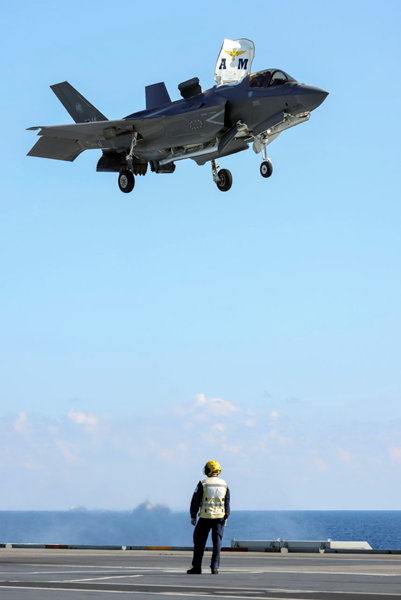

History was made on 22 November when HMS Queen Elizabeth exchanged F- 35B jets from the US Marine Corps VFMA-211 squadron with the Italian Navy and Italian Air Force.
The VFMA-211 US Marine Corps jets departed HMS Queen Elizabeth and landed on the Italian carrier Cavour. Two F35B Lightning jets from the Italian Navy and Italian Air Force landed, refuelled, and relaunched from Queen Elizabeth.
Italy is the third nation that has landed jets on the British carrier. On completion of the refuelling Queen Elizabeth launched an Italian Navy F-35, Italian Air Force F-35, US Marine Corps F-35 and finally an F-35B from 617 Squadron, Royal Air Force. The jets then operated in the skies above the two carriers developing their interoperability and mutual understanding of procedures.
SEA-KIT uncrewed surface vessel trials

Inmarsat announced at the end of November that it had installed a new connectivity capability using virtual networks that will establish higher standards for over-the-horizon uncrewed vessel control.
The installation connects the SEA-KIT International uncrewed surface vessel (USV) Maxlimer to the best available network at all times by switching as necessary between Fleet LTE, Global Xpress (GX) and FleetBroadband satellite services when out of range.
It is understood that the combination will set new standards in continuous connectivity to serve a broader range of USV situations and support the next phase of SEA-KIT technology trials, which started in September off the coast of Plymouth, (UK, South West).
RAF and synthetic fuel flight
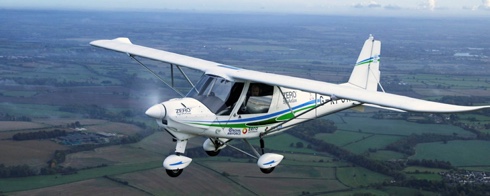
powered by 100% synthetic fuel – UK MoD © Crown copyright 2021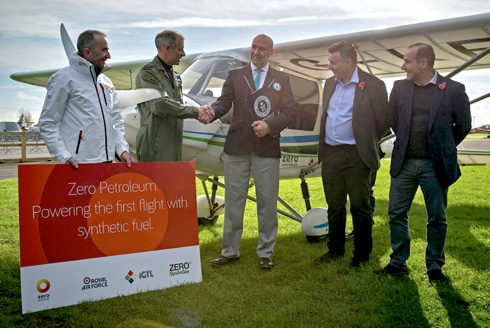
The RAF and Zero Petroleum have won a Guinness World Record for the world’s first successful flight using only synthetic fuel.
In a world-first, an Ikarus C42 microlight aircraft flown by Group Captain Peter Hackett, completed a short flight powered by synthetic gasoline at Kemble Airfield, Cotswold Airport, Cirencester, Gloucestershire, England, earlier this month.
Zero Petroleum’s synthetic UL91 fuel is manufactured by extracting hydrogen from water and carbon from atmospheric carbon dioxide. Using energy generated from sources such as wind or solar, these are combined to create the synthetic fuel.
This innovation is part of the RAF’s Project MARTIN and has the potential to save 80-90% of carbon per flight, supporting the RAF’s vision that synthetic fuels will have a major role in powering the fast jets of the future.
The future of a resilient, trustworthy and ubiquitous Time Transfer
On Wednesday, November 10, 2021, GMV GmbH teaming up with the National Metrology Institute of Germany (PTB) presented the results of the project ‘RESILIENT, TRUSTWORTHY, UBIQUITOUS TIME TRANSFER’ which were achieved through the support of the NAVISP program. Almost 70 people from industry and research attended the final presentation, which shows the great public interest in the project.
As part of NAVISP Element 1, which aims to develop innovative concepts, techniques, technologies, and systems related to the PNT sector along the entire value chain, GMV GmbH’s main objective was to develop innovative and complementary methods of time transfer, focusing on the use of non-GNSS technologies to address common vulnerabilities of all GNSS-based time transfer techniques, such as susceptibility to spoofing, jamming, and signal blockage (indoors).
General Lighthouse Authorities appoint new Head of Ramp;&D
We learn that the General Lighthouse Authorities of the United Kingdom and Ireland (GLA) have named Dr Alan Grant as the Head of its Research and Development team. He assumed his new role on 1 November.
As part of his duties Dr Grant heads the GLA’s research and development programme, considering existing and future maritime requirements and operational strategy.
Dr Grant joined the GLAs in 2003 and has worked on a variety of systems during his time with GRAD. He led a series of successful GPS jamming trials and the development of the multi-system radionavigation receiver performance standards, from initial concept through to international recognition at the IMO. He continues to support resilient positioning, navigation and timing (PNT) in maritime navigation at both technical and strategic levels.
Telespazio UK appoints new Head of Navigation
Martin Bransby joined Telespazio UK in August as the Head of Navigation, with responsibility for delivering activities focussed on robust, resilient and alternative (to GNSS) Positioning, Navigation and Timing (PNT) services.
He was previously with the General Lighthouse Authorities of the United Kingdom and Ireland where he was Head of Research and Development for sixteen years.
According to Telespazio he joined at a time the company is strengthening and developing its Navigation and PNT portfolio, and his domain experience in maritime brings an additional dimension to Telespazio’s Navigation and PNT business.
Navigation 2021 IS happening!
There are many uncertainties in the world at the moment but Navigation 2021 is not one of them.
The Navigation 2021 Conference will be going ahead as a hybrid event from 16-18 November. The full conference will be taking place online on our immersive conference platform, and for those who are able to join in person please join the conference in Edinburgh (including two evening socials).
The conference platform is now live – register now to join the experience.
Polar vessels meet at Harwich International
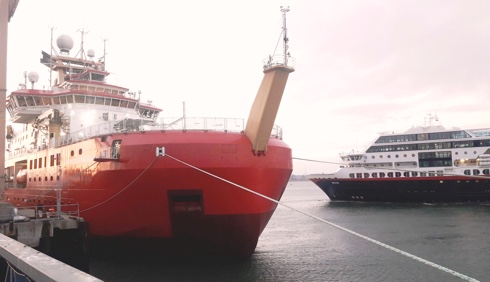
On 20 October Hutchison Ports Harwich International welcomed the first call by mv Maud, a polar cruise vessel operated by Norwegian Hurtigruten Group. The ship is named after one of the most famous polar vessels, the original Maud took explorer Roald Amundsen on his second expedition to the Arctic in 1917.
Returning from a 14-night cruise of Norway during which time the vessel crossed the Arctic Circle, Maud was in Harwich International port at the same time as the British Antarctic Survey‘s new vessel, RRS Sir David Attenborough.
Sir David Attenborough was due to remain at Harwich then sail for London to become the centre of the British Antarctic Survey’s showcase of polar environmental science, engineering and technology, to coincide with the UN COP26 climate talks in Glasgow from 1 November.


